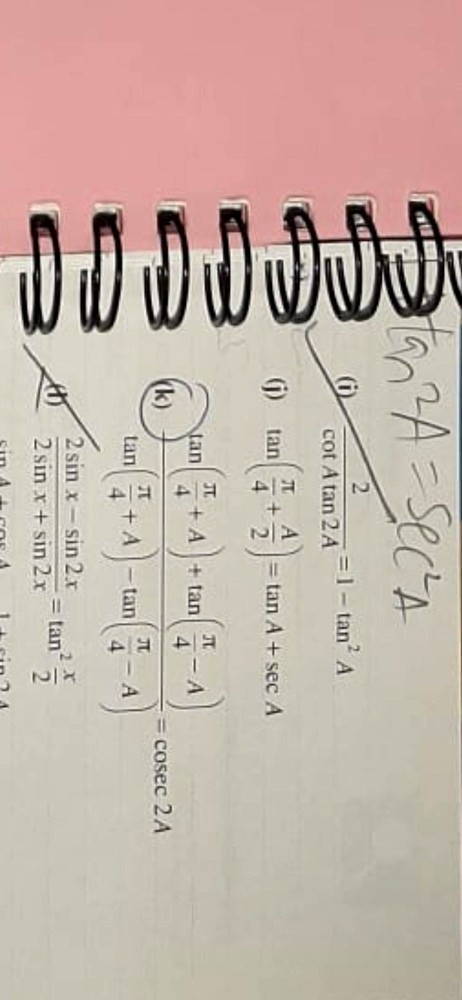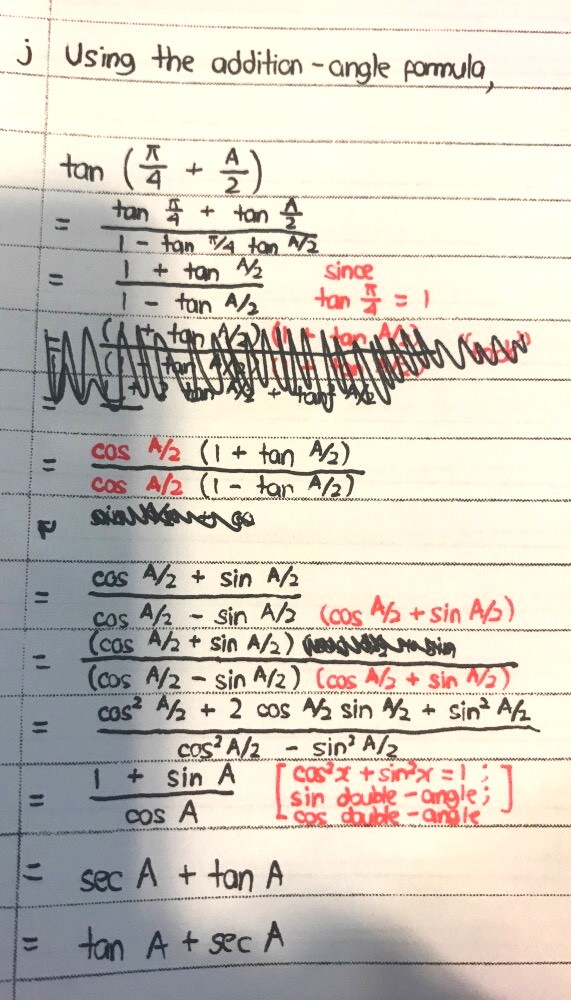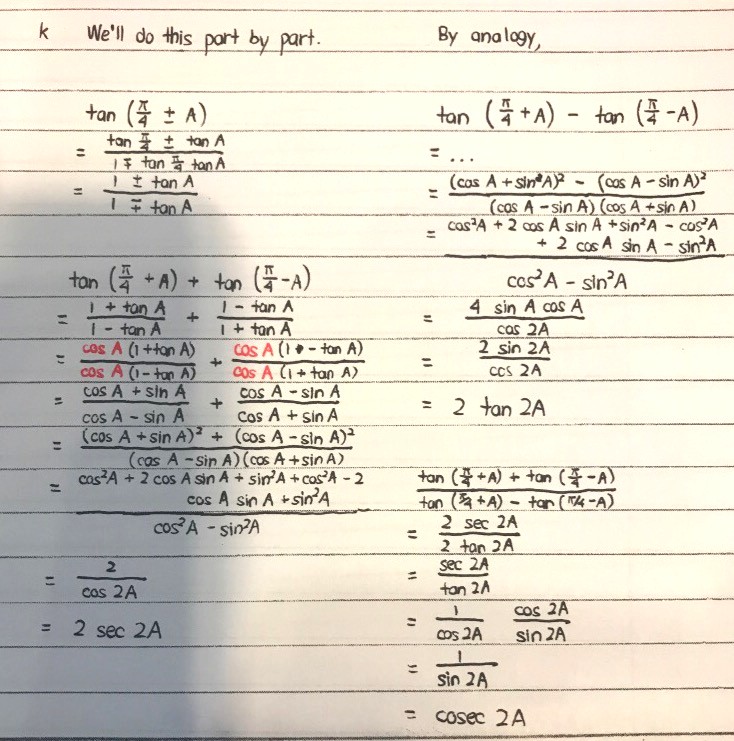Ask Singapore Homework?
Upload a photo of a Singapore homework and someone will email you the solution for free.

Question
secondary 4 | A Maths
2 Answers Below
Anyone can contribute an answer, even non-tutors.

Can someone help me proving trigonometric identities for qn (j) and (k)?
=
(tan π/4 + tan A/2)
‾‾‾‾‾‾‾‾‾‾‾‾‾‾‾‾‾‾‾‾‾
(1 - tan π/4 tan A/2)
=
(1 + tan A/2)
‾‾‾‾‾‾‾‾‾‾‾‾‾
(1 - tan A/2)
=
(1 + tan A/2)(1 + tan A/2)
‾‾‾‾‾‾‾‾‾‾‾‾‾‾‾‾‾‾‾‾‾‾‾‾‾‾‾
[(1 - tan A/2)(1 + tan A/2)]
=
1 + 2tan A/2 + tan² A/2
‾‾‾‾‾‾‾‾‾‾‾‾‾‾‾‾‾‾‾‾‾‾‾
(1² - tan² A/2)
=
(1 + tan² A/2) □□□□□□ 2tan A
‾‾‾‾‾‾‾‾‾‾‾‾‾‾□□+□□ ‾‾‾‾‾‾‾‾‾‾‾
(1 - tan² A/2)□□□□□□ (1 - tan² A/2)
=
cos A/2 / cos A/2 + sin² A/2 / cos² A/2 ‾‾‾‾‾‾‾‾‾‾‾‾‾‾‾‾‾‾‾‾‾‾‾‾‾‾‾‾‾‾‾‾‾‾‾‾ + tanA
cos A/2 / cos A/2 - sin² A/2 / cos² A/2
=
(cos² A/2 + sin² A/2)/(cos² A/2)
‾‾‾‾‾‾‾‾‾‾‾‾‾‾‾‾‾‾‾‾‾‾‾‾‾‾‾‾‾‾‾‾ + tanA
(cos² A/2 - sin² A/2)/(cos² A/2)
=
1 / cos² A/2
‾‾‾‾‾‾‾‾‾‾‾‾‾‾‾ + tan A
cos A / cos A/2
= 1/cos A + tan A
= tan A + sec A
(Proved)
Let x = π/4 + A
Let y = π/4 - A
tan (π/4 + A) + tan (π/4 - A)
‾‾‾‾‾‾‾‾‾‾‾‾‾‾‾‾‾‾‾‾‾‾‾‾‾‾‾
tan (π/4 + A) - tan (π/4 - A)
= (tan x + tan y)/(tan x - tan y)
= (sin x / cos x + sin y / cos y) / (sin x / cos x - sin y / cos y)
= (sin x cos y + cos x sin y)/(cos x cos y) ÷
(sin x cos y - cos x sin y)/(cos x cos y)
= sin(x + y) / sin(x - y)
= sin(π/4 + A + π/4 - A) / sin(π/4 + A - (π/4 - A))
= sin(π/2)/sin(2A)
= 1/sin2A
= cosec 2A
(Proved)
See 2 Answers
Multiplying cos A/2 by tan A/2 is akin to multiplying cos A/2 by sin A/2 / cos A/2 which simplifies to sin A/2.
On top of this, leaving my trigonometric expressions in sines and cosines simplifies matters a lot when it comes to the double angle formula.






